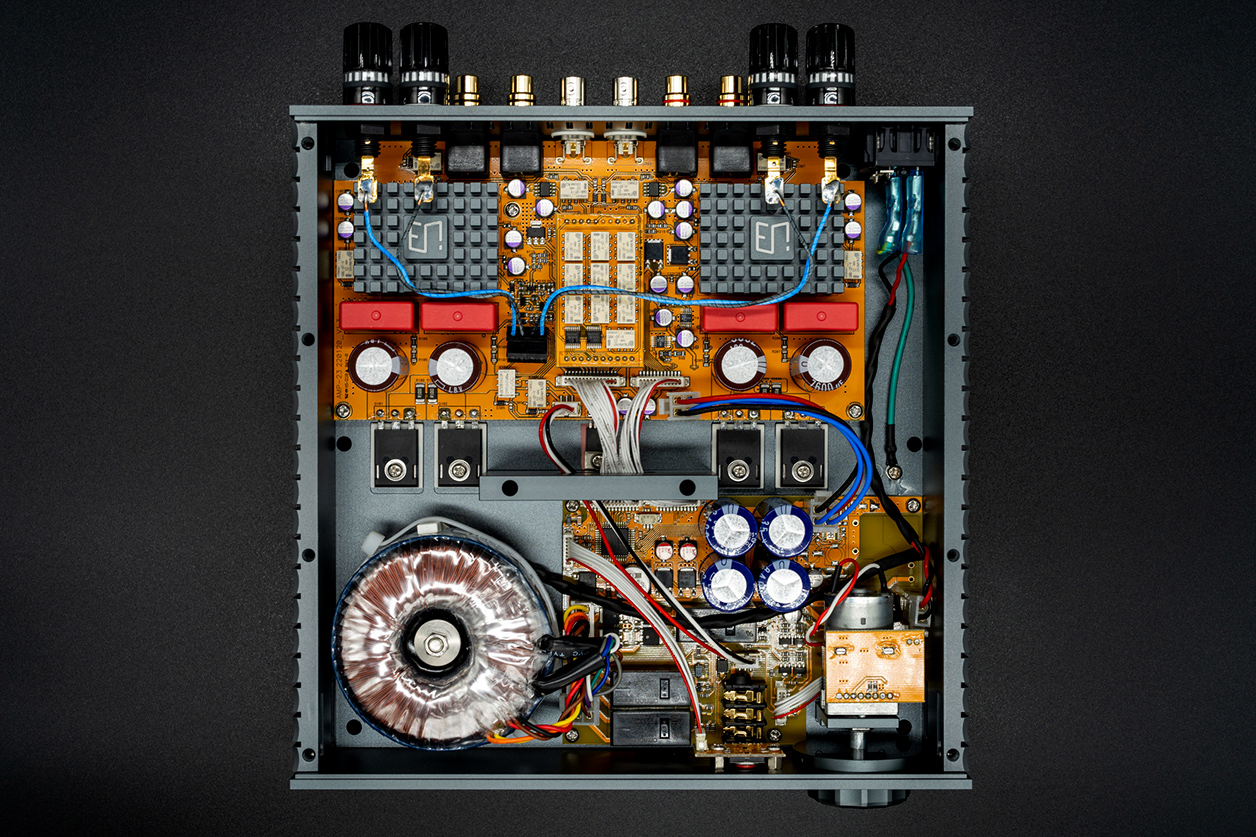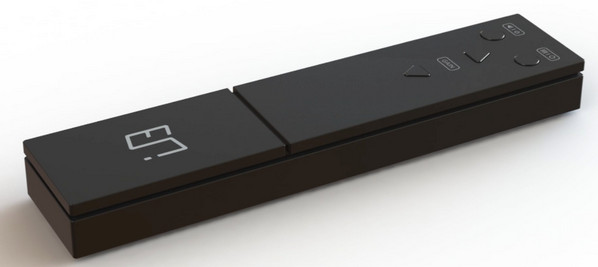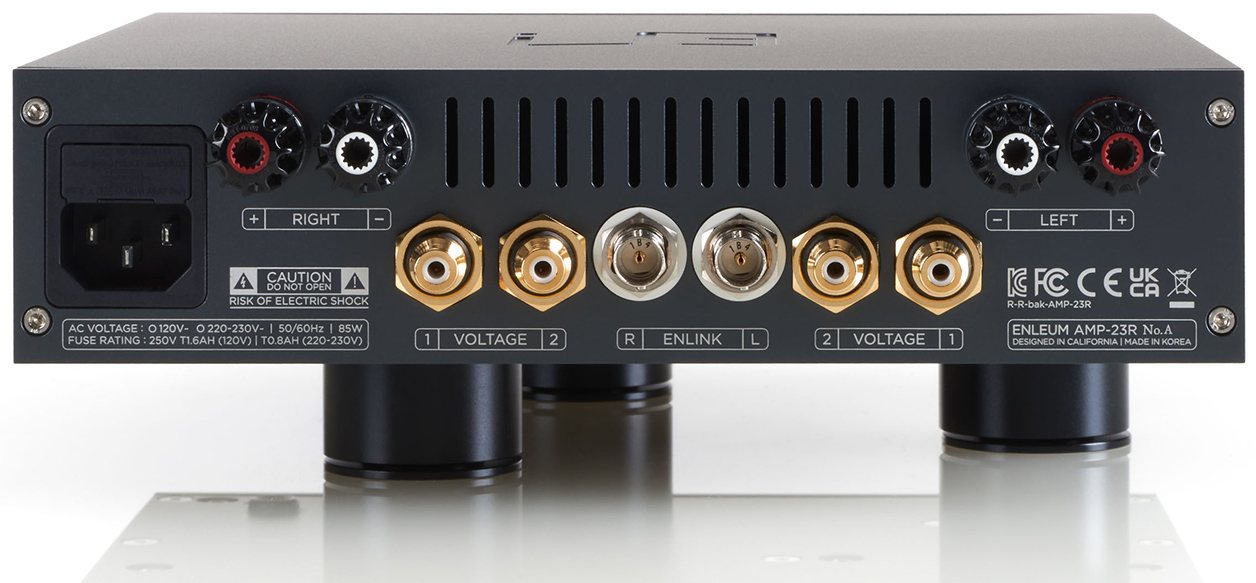
Country of Origin

Reviewer: Srajan Ebaen
Financial interests: click here
Main system: Sources: Retina 5K 27" iMac (4GHz quad-core with Turbo, 32GB RAM, 3TB FusionDrive, OSX Yosemite. iTunes 14.4), PureMusic 3.02, Audirvana 3, Qobuz, Tidal, Singxer SU-6 USB bridge, Sonnet Pasithea DAC; Active filter: icOn 80Hz/4th-order hi/lo-pass; Power amplifiers: Kinki Studio EX-B7 mono, Enleum AMP-23R; Headamp: Kinki Studio; Phones: HifiMan Susvara; Loudspeakers: sound|kaos Vox 3awf w. sound|kaos DSUB 15 on Carbide Audio footers, Audio Physic Codex, Cube Audio Nenuphar Cables: Complete loom of Allnic Audio ZL; Power delivery: Vibex Granada/Alhambra on all source components, Vibex One 11R on amps, Furutech DPS-4.1 between wall and conditioners; Equipment rack: Artesanía Audio Exoteryc double-wide 3-tier with optional glass shelves, Exoteryc Krion and glass amp stands; Sundry accessories: Acoustic System resonators, LessLoss Firewall for loudspeakers, Furutech NCF Signal Boosters; Room: 6 x 8m with open door behind listening seat
2nd system: Source: Soundaware D300Ref SD transport clock-slaved to Denafrips Terminator +; Preamp/filter: icOn 4Pro + 4th-order/40Hz hi-low pass; Amplifier: Goldmund Job 225; Loudspeakers: Acelec Model One, Dynaudio S18 sub; Power delivery: Furutech GTO 2D NCF; Equipment rack: Hifistay Mythology Transform X-Frame [on extended loan]; Sundry accessories: Audioquest Fog Lifters; Furutech NFC Clear Lines; Room: ~3.5 x 8m
Desktop system: Source: HP Z230 work station Win10/64; USB bridge: Singxer SU-2; Headamp/DAC: iFi iDSD Pro Signature; Headphones: Final D-8000; Active speakers: DMAX SC5
Upstairs headfi/speaker system: Source: smsl Dp5 transport; DAC: Auralic Vega; Integrated amplifier: Schiit Jotunheim R; Phones: Raal-Requisite SR1a; Active DSP speakers: Fram Midi 120
2-channel video system: Source: Oppo BDP-105; All-in-One: Gold Note IS-1000 Deluxe; Loudspeakers: Zu Soul VI; Subwoofer: Zu Submission; Power delivery: Furutech eTP-8, Room: ~6x4m
Review component retail: $6'250

 Three's the charm. Or, three counts and you're out.
Three's the charm. Or, three counts and you're out.
Which is it? Neither. The first was a charm already. But, get three counts and you're in still deeper.
Huh?
This redux starts with one not so fine day when my AMP-23R refused to power up. Unfazed I replaced the mains fuse with an AMR Audio of the same value. No joy. Bum virgin fuse? Strange but okay. I scared up another freshie. Still no joy. Hmm. Had I studiously followed the rule of three—all good things are three like tomatoes, mozzarella and basil—perhaps I would have hit pay dirt? If so, I'd have missed the year-end bonus. To explain, let's backtrack. Designer Soo-In Chae had long wanted to update my early pre-production unit with "newer firmware". I simply used mine happily and constantly to not want to be without it for the dubious benefit of some flashier firmware. This isn't an FPGA-based converter or Devialet amplifier whose sound changes with new code. This is a purely analog machine whose firmware merely controls housekeeping chores like biasing, volume relays, turn-on and such. So I figured. Yet with my unit finally failing to fire up, I had no choice. Off it went to the Seoul Day Spa for what I hoped would be a quick fix. Perhaps a power relay had given up its ghost? While there, Soo-In could reflash the code as he'd always wanted to. A few weeks later he checked in to flip my script and wig.
"I went to the factory today to check on your AMP-23R among other things. It's good to go. Only the fuse was bad. But the serial number became 100 so is no longer the original 004. We performed comprehensive exchanges that only used the original transformer and motorized Alps pot then replaced everything inside. Even on the case we replaced its rear and bottom panels to take the new boards and WBT connectors. It's now the same spec as the third production run. Formally offering the same exchange sadly makes little financial sense to us or our clients as the exchanged parts, boards and labor cost as much as building a new amp. When the parts shortages hit and we sold out the initial production run quickly after its release, we had to redesign the AMP-23R boards for certain new parts to replace those which during the crisis had become unobtainium. For your ongoing reviews it made sense to make your unit identical to current production. But parts and labor costs of this process are far too high to be offered as a sensible formal 'upgrade' path."
The AMP-23R³—no such official designation exists but it makes the point—is a 3rd-gen effort that was secretly updated with more than just new firmware. As its chief designer laid out, the overhaul is serious enough to scrap the original boards, even certain chassis panels. Early adaptors like myself and many others were already thrilled to bits with our units. Make no mistake. The first generation was the charm. I never saw one reason to update it; at all. As I learnt, third production simply hasn't stood still. My unchanged references in the interim were Crayon's CFA-1.2 and Kinki Studio's EX-B7 monos. They and sheer familiarity with the departed Enleum have me convinced that R³ is retuned for intensified in-room presence and an injection of extra posh in tone. The latter caused instant recall of Raidho's recently departed TD1.2. Calling the textural difference 'sweeter' misfires if we associate 'syrupy' by any degree. How to then frame posh? Put it this way. We needn't be tailors or upholsterers to identify percale thread count by blind touch. As we sit down in a fancy eatery whose white table linens are luxuriously thick and perfectly starched, their quality is self-authenticating. It's obvious beyond doubt; and that our bill shall reflect it. After all, a professional service must pick up, clean, starch, fold and drop off again all those spotless linens. That's not free.

The same self-validating reveal of upscale table linens held for the AMP-23R³. In the tone/texture domain, something had grown more luxurious. Higher thread count? Plusher pile or tuft? I find it particularly noticeable on massed strings. Some subliminal grain or rust has dispersed, some inner glow turned on. Hindsight shows later adopters that being slow to pull the trigger was a mark of unwitting smarts, not playing at Chief Sitting Fence. For me this is a second-coming love letter to what already was my favorite low-power amp. I wasn't inclined to say anything. It seemed self-serving at best, at worst likely to be misread as Schadenfreude or disrespect of first buyers. Soo-In was simply keen to finally fess up. Their R&D didn't freeze when first production was put to bed. Alternate parts discovered whilst responding to shortages, lessons learnt from later projects all circled back to the next run without affecting nomenclature. No MkII or SE, just learning on the job whilst juggling the fallout from ongoing supply-chain issues due to Covid and Ukraine. Excellence won't stand still or it's no longer a living process. There can be no rest for the wicked; no moss allowed to grow on prior laurels. Surely we can't be upset by that or we'd negate mankind's creative spirit, resilience and ability to adapt and overcome; without joining the Marines.
Just as businesses adopt the right to refuse service if one is dressed improperly or a disturbance, so manufacturers reserve the right to quietly improve their wares continually. It's why current AMP-23R are even better than my original serial # 004 from the first batch. The only visual difference is the switch from Cardas to WBT terminals; and the fancier remote. The only functional difference is the volume controller returning automatically to zero with each power-down. The big deal now is for Enleum's forthcoming 100wpc AMP-54R to equal the illustrious 25-watter. That should be quite the engineering conundrum. Over & out.
Enleum's website